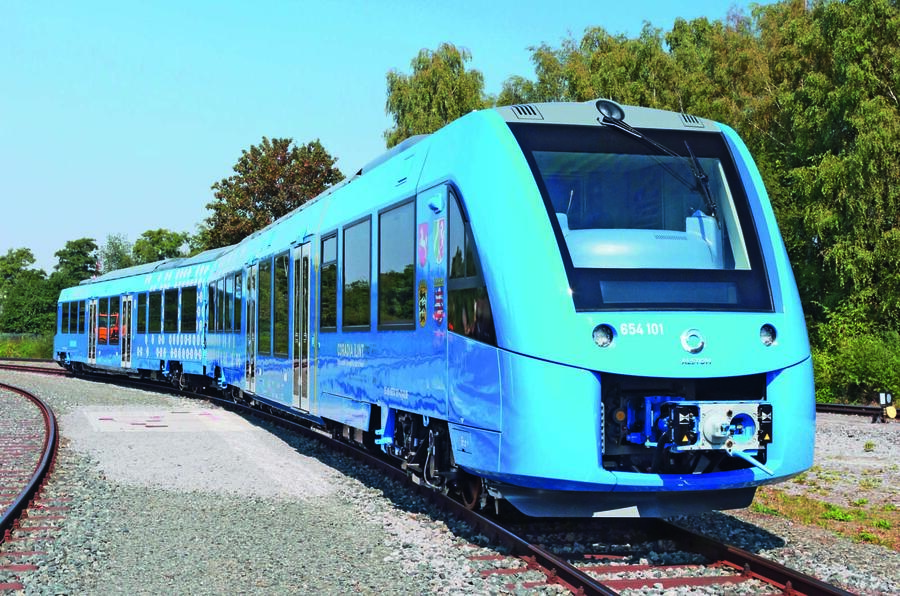Tech talk: Why hydrogen could be an easy cell
Less wasteful than a petrol or diesel car, easier to use than an EV - is now the time to stop dismissing hydrogen as a load of hot air?
Twenty years ago, DaimlerChrysler, as the two merged companies were called then, launched the A-Class-based Necar 4, the first production-ready fuel cell vehicle capable of being driven on public roads. The plan was for the first commercial version, dubbed, ‘Necar X’ to be launched on public sale in 2004.
By that time, DaimlerChrysler said it would have spent over £1.1 billion on fuel cell vehicle development: it was that big and looked that certain. The board member responsible for R&D, Klaus-Dieter Vöhringer, said back then: “From 2004 to 2010, the population of fuel cell vehicles has to increase very fast otherwise the [refuelling] infrastructure will not grow.” He was dead right in one sense: it didn’t grow and fuel cell cars haven’t taken to the roads in large numbers. Yet.
Some would say hydrogen fuel cells are the holy grail of sustainable propulsion because they emit nothing except water and heat from the tailpipe. So long as the hydrogen fuel they consume is produced sustainably, it’s an environmental free lunch with refuelling pretty much as easy and fast as it is with petrol or diesel. In common with a battery, a fuel cell ‘stack’ consists of hundreds of individual cells producing a little over one volt each.
The favoured technology for cars and transport is the polymer exchange membrane (PEM) fuel cell. A fine polymer membrane sandwiched between a platinum cathode and anode and two flow plates in a kind of double-decker sandwich make up each cell. Hydrogen travels through the flow plates on the anode side while air is pumped through the cathode side as a source of oxygen. Hydrogen protons are attracted through the membrane to the oxygen, making water, leaving the hydrogen electrons behind, forming a current in an external circuit.
There have been lots of technical hurdles to overcome – including scavenging residual water from inside the cells, which would freeze at low temperatures, starting the stack in sub-zero temperatures, economic manufacture and robustness – but today fuel cell systems are advanced, if still pricey. An entire fuel cell system consists of a stack, a carbonfibre tank capable of storing hydrogen at 750 bar and a small lithium ion battery to deliver both the fast surge of power needed for acceleration and to store energy from regenerative braking. Tough hydrogen tanks split and release hydrogen rather than exploding if damaged and, in that sense, the world’s most plentiful element is safer than petrol. The rest of the powertrain is like that of any other electric car, with an electric motor and power control module to manage it all.
It’s also 20 years since the formation of the California Fuel Cell Partnership, one of the world’s largest institutions pushing the development of fuel cell technology. With its 2030 Vision programme, it aims to get 1,000,000 fuel cell vehicles on California roads along with 1000 hydrogen filling stations by 2030. Maybe then, the fuel cell ball will really start rolling.
New train of thought

Hydrogen fuel cells are ideal for large vehicles as well as cars. Two Coradia iLint fuel cell trains from French firm Alstom have been running in Germany since 2018 and 27 more have been ordered by a transport authority. A Hydroflex train masterminded by the University of Birmingham and train maker Porterbrook began UK trials in June.
Also read: Tech talk: Hybridising combustion engines with the 'biscuit tin' motor
Tech talk: Why aluminium chassis makes good sense for EVs
Tech Talk: How Volkswagen's DSG gearbox predicted the future?
RELATED ARTICLES
Auto Giants Explore Hybrid Strategy as EVs Hit Speed Bumps
Slower-than-expected EV adoption, tight CAFE norms and ever-present efficiency demands are giving hybrids a second wind ...
Continental Taps India as Global Hub for R&D and Manufacturing
Continental’s spin-off of its automotive business into AUMOVIO marks a strategic shift, placing India’s engineering and ...
India's EV Story: Promise, Progress, and Challenges
Amid the fanfare of new launches and soaring expectations, mainstream buyers remain hesitant.





 23 Jul 2019
23 Jul 2019
 22761 Views
22761 Views





 Ketan Thakkar
Ketan Thakkar


 Shahkar Abidi
Shahkar Abidi


